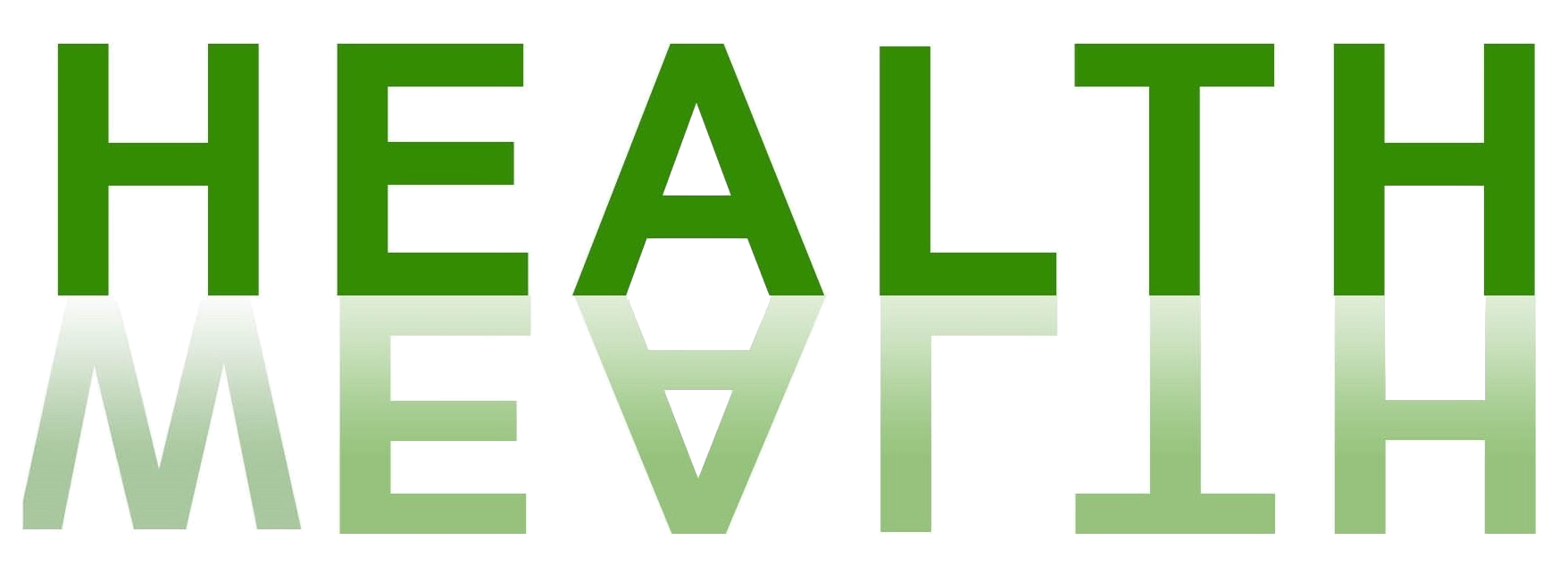Don’t Fear Fat: A Complete Guide to Fats
To stay healthy, it turns out that eating a low fat diet is probably the worst thing you can do. Yet for decades, we’ve been told by health experts, medical professionals, nutrition authorities, dietitians and our government to consume less fat to be able to lose weight and avoid heart problems.
Why we are afraid of fats?
When the first-ever set of U.S. Dietary Guidelines was introduced in the late 70s, fat was the biggest villain. In an era where smoking was still very commonplace and exercise was minimal dietary fat was unfortunately (and wrongly) blamed for the skyrocketing incidence of heart attacks. Americans were told to consume more fruits, veggies, whole grains, complex carbs and “natural sugars,” and less refined and processed sugars, total fat, saturated fat, cholesterol, and sodium.
They were also told that everyone except children should go for low-fat and nonfat dairy products. Thus, began the low-fat craze of the 80s and 90s.

In the mid-1990s, a flood of low-fat products entered the food market including:
- Nonfat salad dressing
- Baked potato chips
- Low-fat sweetened milk and yogurt
- Low-fat processed turkey and bologna
The era of carbs.
Instead of fat, we were told to consume more carbs. Indeed, carbohydrates were positioned as the building blocks of a healthy diet. The 1992 edition of the food pyramid, created by the U.S. Department of Agriculture, recommended as much as 11 daily servings of bread, cereal, rice, and pasta. Unfortunately, this was recommended due to food lobbying instead of science.
But nutrition, like any scientific field, has advanced quickly, and by 2000, the advantages of very-low-fat diets had come into question.
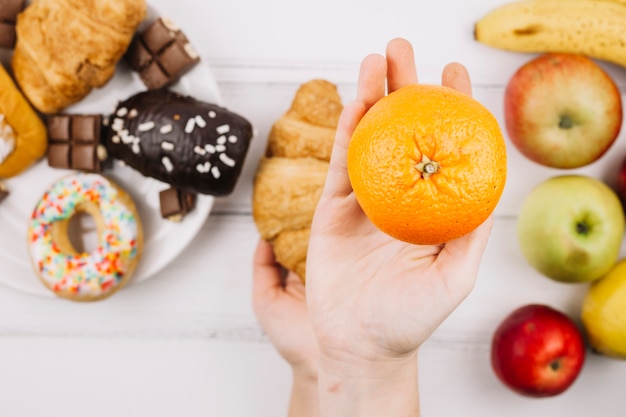
The truth of the matter is…
The truth is that eating fat does not makes us fat. It’s all about the quality and quantity of the foods that we’re eating that will make us gain weight. Another big fear is that eating fat can raise our cholesterol and cause heart attacks. Research has also shown this to be false.
There are actually two types of cholesterol: the good one (HDL) and the bad one (LDL). Any spike in the bad one is usually from systemic inflammation that’s often a result of an unhealthy diet (eating plenty of junky and sugary foods). However, we shouldn’t blame healthy fats as the reason for these problems.

Fundamentally, we need to eat fat so our bodies can carry out basic processes.
Listed below are a few of the top reasons why we need fats:
Fats deliver energy.
Fats are the most efficient source of food energy. Each gram of fat delivers 9 calories of energy for our body, compared with 4 calories per gram of carbs and proteins.
Fats help the body absorb vitamins.
Vitamins A, D, E, and K are fat-soluble vitamins, and therefore the fat in foods helps the intestines absorb these vitamins into the body. That means that having a healthy fat (such as olive oil) with your veggies is important for proper absorption of those good vitamins!
Fats build healthy cells.
Fats are an essential part of the membrane that surrounds each cell of the body. Without a healthy cell membrane, the remaining portion of the cell couldn’t function.
Fat makes a protective cushion for our organs.
Most of the vital organs, especially the kidneys, heart, and intestines are cushioned by fat that protects them from injury and holds them in place. As a tribute to our body’s own protective wisdom, this protective fat is the last to be used up when our body’s energy reserves are being tapped into.
Fats build brains.
We need fats because they provid the structural components not just of cell membranes in the brain, but also of myelin, the fatty insulating sheath that surrounds each nerve fiber, enabling it to send messages faster and optimize all the body’s functions.
Fats make hormones.
Fats are structural components of a number of the most important substances in our body, including prostaglandins, a hormone-like substances that control lots of the body’s functions. They also control the production of sex hormones key to normal development and functioning.
Fat promotes healthier skin.
One of the more obvious signs of fatty acid deficiency is dry, flaky skin. Along with giving skin its rounded appeal, the layer of fat just beneath our skin (named subcutaneous fat) acts as our body’s own insulation to simply help regulate body temperature. Lean people are generally more sensitive to cold; obese people are generally more sensitive to warm weather.

Surprising things that happen to our body if our diet doesn’t contain enough fat.
- We’ll be hungry more often.
- Weight gain.
- Increased risk of cardiovascular disease.
- Increased risk of cancer.
- Increased inflammation of the body (which can cause chronic disease).
- Hormonal imbalances.
- Vitamin deficiencies.
- Suppressed immune system.
- Increased risk of mental health issues.
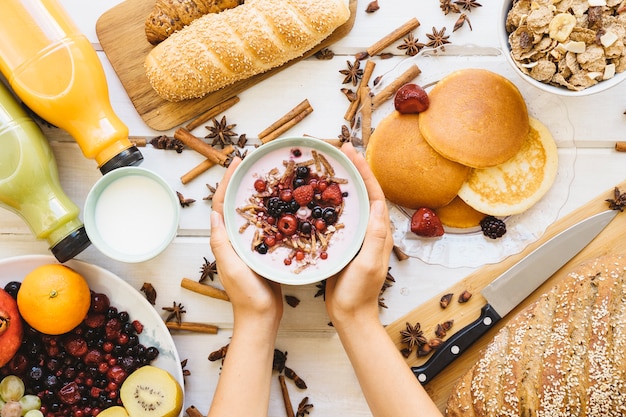
Good vs. Bad Fats: What’s the Skinny?
As you can see, fat is vital to your health. However, it is essential to choose the right kind of fats in appropriate portion sizes.
Here’s how to choose the right fats.
The worst: trans fat.
Trans fat is the type of fat you want to avoid. It’s present in highly-processed foods like packaged snacks, canned soups, white bread, deep-fried foods, and processed meats.
Unfortunately, trans fat is widely used in the food industry due to its technical properties. Although as people become more aware of their health and food consumption, food companies are trying to decrease its use.
It is really a thick fat, which makes it easier to manipulate within the manufacturing process. Additionally, it preserves a lot better than other fats, helping manufacturers create food that doesn’t spoil.
Food containing trans fat can taste delicious, but eating them regularly with time is detrimental to our health. Eating foods rich in trans fat increases the level of harmful LDL cholesterol in our blood and decreases the amount of healthy HDL cholesterol.
Trans fat is associated with many common health conditions such as diabetes, heart problems, and stroke. It doesn’t have any health advantages and should be avoided as much as possible.
The middle ground: saturated fat.
Saturated fat is found in different natural foods and animal products. At room temperature, it’s solid in form. Saturated fats are significantly better than trans fats, but don’t have as many benefits in comparison with unsaturated fats so they’re best consumed in moderation. They are part of a balanced diet when eaten in the correct amounts.
If we want to lower our cholesterol levels, it is generally recommended to consume no more than 5 to 6 percent of total daily calories from saturated fat. Although, the research is mixed on whether saturated fat and high cholesterol have any real correlation.
Some examples of food containing saturated fat are…
- Dairy products
- Red meat
- Processed cheeses
- Coconut oil (has saturated fat, but has also been proven to boost the HDL cholesterol, the good one.)
The good stuff: omega-3s and omega-6s.
There are two beneficial types of fat: monounsaturated and polyunsaturated. These fats are present in wholesome, natural food sources and should make up one-third of our daily fat intake.
Polyunsaturated fat contains mostly omega-3 and omega-6 fatty acids. Omega-3 fatty acids are present in fish, walnuts, and chia seeds. Omega-6 fatty acids are found in soybeans, flaxseeds, and sunflower seeds.
These key omegas should really be consumed in a balanced manner since they work together to help keep our body functioning optimally with omega-3 fatty acids reducing inflammation and omega-6 fatty acids promoting inflammation. Eating either in excess creates an imbalance and can lead to health conditions such as heart disease.
Monounsaturated fat was discovered in the Mediterranean. Even though the Greek diet is full of fat, researchers found a surprisingly low risk of the heart problem. The main reason? Olive oil. Other sources of monounsaturated fat include avocados, peanut oil, and certain nuts.
Even animal fat has been found to contain a healthy balance of omega fats when they are sustainably grown. This means organic, grass-fed, free ranges eggs, dairy, and meat.
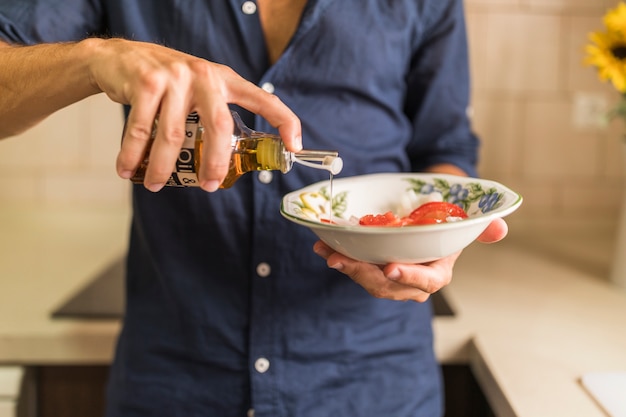
Ways to eat more fat.
For an adult eating 2,000 calories daily, we need to eat around 53g of fat (18g or less of saturated fat). This will sometimes be challenging for those who aren’t used to eating natural fat.
Listed below are the top tips on how to eat more fat.
Use different fats.
Fats can change the flavor of a dish, which adds variety to your meals. For example, top green beans with butter for a soothing taste. Or, fry them in peanut oil and drizzle with sesame oil for a delightful, Asian-inspired variation.
Try out new combinations to see what you like best.
Stock some of these healthy fats in your fridge or pantry:
- Butter (grass fed only!)- best for cooking!
- Olive oil (extra virgin and organic)- best consumed raw!
- Animal fat (organic grass fed)
- Avocado oil
- Coconut oil- great for coking!
- Sesame oil
- Other nut oils (macadamia, almond, walnut, etc.)
Try sticking to these fats that have been found to superior to more processed oils like sunflower and soybean oil.
Make your own salad dressings.
Get rid of bottled, creamy salad dressing and make your own with heart-healthy oils, like olive oil, walnut oil or avocado oil. Mix two parts oil with one part vinegar, add your chosen herbs and enjoy!
Cook with fat.
No more steamed vegetables or dry chicken. Cook your vegetables, meat, fish, and eggs in tasty good fats like butter and coconut oil. Use as much as you need since it will help with absorption.
Choose fatty fish.
Fish is the best meat to eat when adding healthy fats to your diet. Fish, especially fatty fish, are full of polyunsaturated fats. These fish are also full of Omega-3 fatty acids. Healthy fish includes:
- Salmon
- Tuna
- Sardines
- Herring
- Mackerel
- Lake trout
- Anchovies
- Oysters
Eat avocados.
Avocados are packed with healthy fats and are thought to be a “super food”. 230g of pureed avocado has a whopping 35g of fat (55% of our recommended daily intake. It has 22.5g of monounsaturated fat and 4.3g of polyunsaturated fats. Avocados are really delicious and healthy!
Eat the whole egg.
The fat present in the yolk is the healthy kind so there’s no need to toss them aside. Keep hard-boiled eggs in the fridge for an instant grab-and-go breakfast or snack.
Incorporate seeds.
Seeds like chia and flaxseed certainly are a great source of omega-3 fatty acids. 1 tablespoon (10.3 g) of flaxseeds has 4.3 g of fat (0.4 g saturated, 3 g polyunsaturated, 0.8 monounsaturated) and has 55 calories.
The same amount of chia seeds has about 4 g of fat (0.5 g saturated, 3 g polyunsaturated, 0.25 g monounsaturated) and has 65 calories.
Add these to a salad, smoothie, yogurt, or Incorporate them into a bread recipe for an additional boost of healthy fats.
Go nuts.
Nuts like almonds and walnuts are full of calories (an ounce of walnuts has 185 calories) but they’re rich in Omega-3 fatty acids and unsaturated fats.
You can also consider eating natural peanut butter and other nut butters. These often are full of healthy fats and proteins; however, avoid butters that are full of sugars and salt.
Make sure your snacks contain fat.
Generally, it is most beneficial to avoid excessive snacking, but if you’re too hungry to make it comfortably to the next meal, grab a whole food snack with lots of healthy fat. Good choices are cheese, hard boiled eggs, and nuts.
Blend fat into coffee or tea.
Melting butter or coconut oil into coffee or tea is quick and easy. Pouring in heavy whipping cream is good, too. This warm and comforting shot of fat can replace breakfast, stave off hunger between meals, or substitute for dessert if you aren’t quite full.
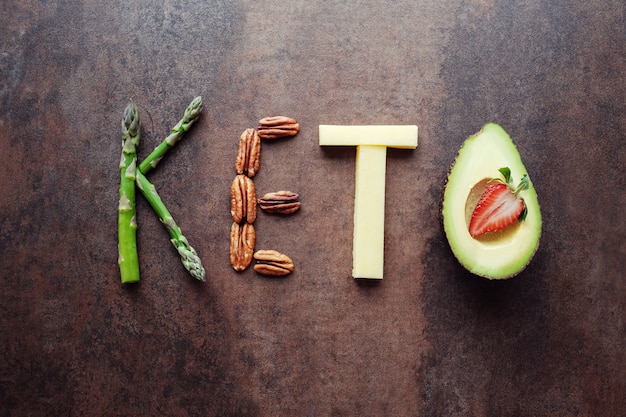
Keto Diet: Can this high-fat diet help you lose weight and fight disease?
The ketogenic or “keto” diet is a high-fat, moderate protein, low-carbohydrate eating plan. It’s full of meats and fats while carbohydrate intake is limited to only 50 grams each day.
As carbs are reduced and fat is increased, our body enters a metabolic state called ketosis. Then our body starts turning fats into ketones, which are molecules that can supply energy for mental and physical performance.
To be able to get the most out of a ketogenic diet, it is recommended to eat high-fat foods and limit your carb intake to fewer than 30–50 grams per day. If you stick to it, the advantages of a ketogenic diet are really impressive — particularly for health and weight loss.
Ketogenic diets may also reduce metabolic disease risk factors and even fight diseases like type 2 diabetes and obesity.
So the moral of the story is .. don’t fear fat.
When adding fat to your daily diet, both quantity and quality are important factors to take into account— with quality weighing heavier. In clinical studies, subjects who consumed a moderate or low-fat diet didn’t shed weight with more ease compared to participants who followed an average or high-fat diet.
It turns out that the kind of fat consumed is significantly more important than the amount.
So, it’s time to consider fat as an essential part of our diet and not something to avoid. Give attention to eating healthy fats, in moderation obviously, and limiting the bad fats.
If you intend to reach your wellness goals, it is most beneficial to limit your consumption of foods containing bad fats as much as possible and trade them for healthy alternatives.
So next time you plan your meals for the week, think about what types of healthy fats you can include in every meal and enjoy the benefits they bring!
Want more health tips? Subscribe to our newsletter for weekly blog articles related to all things health.
